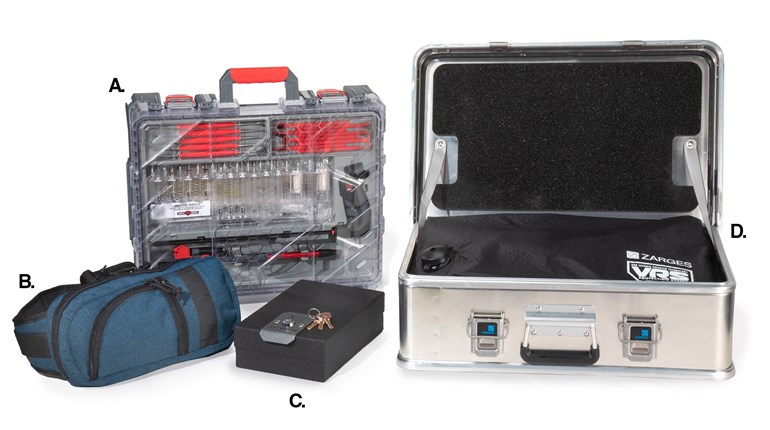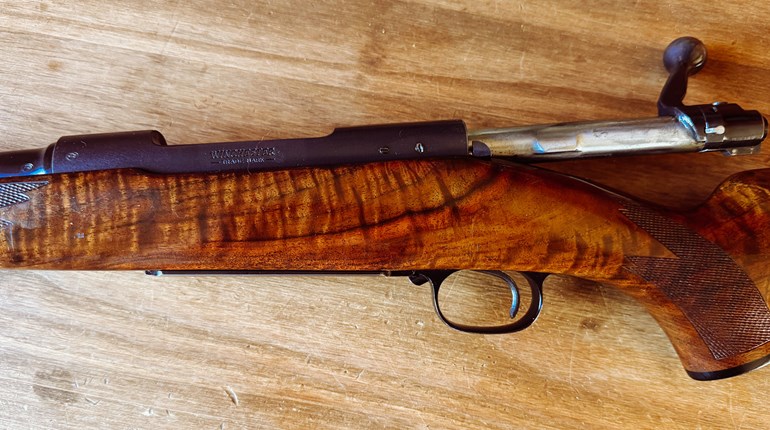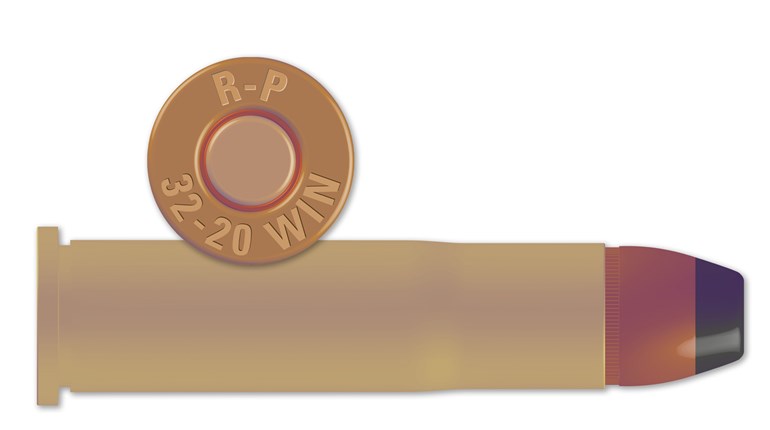
As much as we enjoy shooting, we’re not sure we’d still be at it but for reloading. In the early years, we dove in mainly to save money. Standing on the shoulders of comparative shooting giants—that is to say, loads we learned from the likes of Bill Wilson and Ed Brown—even our early attempts soon rivaled the best factory ammo we could buy. Though we’ve seen the last of metals prices that made $7 per hundred match-quality pistol ammo possible, those .45 ACPs shot much better than we were regularly able to do. How did we know? The promise of “free ammo” worked on a few truly superb pistoleers, and they shot them cheerfully for us in confirmation.
Centerfire rifle was another matter. We saw old hands and great natural young ones dumping three, five, even 10-shot strings into spreads hovering under an inch (this was nearly 30 years ago, when such performance was not yet commonplace), but many buck-a-stick beauties ran disappointingly at twice that spread from our rifles. To put it mildly, grrrrrrrrr. The common denominator was usually the same: Handloaded, rifle-specific cartridges.

So we got with the program, as the old saying goes, and in the intervening 30 years we’ve built cartridges for both short and long guns using many different systems. The component formulas are no longer much at issue–winnowing our way through these is part of the fun. But any way you slice the nuances, sooner or later, speed gets to be a prized commodity: Less time fabricating and more time shooting.
Most of us learned in a hurry that a practical kit for bulk output in either rifle or (straight wall) pistol calibers wasn’t the same unless equipment cost was essentially no object. A pistol get-up that could crank out 300-500 rounds per hour reliably was a $500-700 investment, for starters. But most rifle cartridges had different imperatives: Resizing especially put too much eccentric pressure on the rotary apparatuses of budget-minded configurations. This meant single-stage for most rifle cartridge reloading. (This is not universally true: The monster Dillon Precision Super 1050 will do many modern rifle cartridges progressively, but getting there isn’t trivial, bucks-wise.) And single stage meant lots of adjustments, or checking of same; hardly a recipe for throughput.
Was there no happy medium?
As it turns out, the answer—emphatically “yes”—comes from a modest concern that’s been cranking out fine reloading gear for more than 70 years: Redding Reloading.
Just so we’re clear, no nuts-and-bolts reloading journey is about to be embarked upon. In the first place, even a primer (take a look here) is the stuff of many columns, and you’ll see we’ve already taken a detailed stroll down that path. What perhaps remains is some thorny decision-making. In unapologetic “First Gear” fashion, we resort to blatant cajolery (if there is such a thing, blatant or otherwise): For lifetime scale gear that you may supplement, but will find almost impossible to replace, Redding’s T7 turret press is the place to start. Superb quality does not come at the price of reasonable speed.
We urge the big Redding first on the basis of cost. By the time you’ve bought everything you really need, you can save a couple hundred bucks on cheaper combinations of press and essentials like a powder measure, scale and case trimmer.
But you’ll mostly hate ‘em if you subsequently see the Redding versions at work. Our friends at Brownells have the T7 press and “Versa Pak Pro” (all the essential other goodies noted above) at a price that will leave several nice dinners out left over from $1,000, and nothing to ever redo. We see no chinks in the Redding component parts either, and all have a Lifetime Warranty just in case. You can’t do decent single-stage rifle and a modest progressive (for pistol) and expect it to work decade-in and decade-out for this kind of money.
What you’ll also get in full measure is fiddle-free versatility. We posit this after having set the T7 up to run .308 Winchester (actually, 7.62x51) out of three of the seven (hence the T7 name) tool positions using Redding dies, and .45 ACP out of the remaining four, intentionally using a hodgepodge of dies from mixed manufacturers. We made a box (20 rounds) of nominal “match” rifle ammo from prepped brass, and then 150 rounds of .45, but with three different bullet profiles.
Including powder measure adjustments, those 170 rounds took just 81 minutes to fabricate, end-to-end, and we didn’t have to take anything apart to change calibers. Try this in nearly any sub-$2,000 rig, and you’ll see why we were impressed.

Efficiency, in several senses, is another notable win with the Redding. The gear you’ll need for every reloading session will fit in about 20 inches of linear bench space. We aren’t suggesting you set it up this tightly, but we pretty much had to, and so took it as a challenge. We grant some accommodation was needed to prep (trim) our rifle brass and weigh charges, but these tasks aren’t always needed for the duration of every session. But for what has to be available all the time—and for those 81 minutes above—we had no troubles at all.
We particularly like the idea of being able to put multiple calibers—even straight wall shorty pistol dies and largish rifle dies—on the same tool head (have as many of these as you like [$79], and have really easy caliber-swapping). In our exercise, this meant we could use the same shell holder. This isn’t a big deal for single stage or a turret, but it avoids a fairly major nuisance of some progressives: Swapping out that rotating plate.
The rotating plate is where progressives get their desirable speed, of course. Unsurprisingly, the vertical motion that works the case, as well as the rotational alignment needed to advance the case to successive tools must be precise, or things go wrong in a hurry. Spilled powder, crushed case mouths and buggered primers are just the more likely ways problems appear.
Single stage systems bypass these by simplifying the process: Fixing both the case and tool so they meet only moving up-and-down. They do it at the price of more handling, and pauses to swap tools. The T7 falls neatly between—depending on the method you employ, you can cut case handling down to just twice, yet sacrifice none of the fixed-tool/zero-rotation precision of single stage.
You have to work on other systems to fully appreciate it, but the superb access of turret designs to all the tools and the cartridge itself in every phase of construction is a delight that doesn’t fade. This characteristic also has a fairly urgent safety benefit: There’s almost no chance—or at least excuse—for either a double- or short-charged case due to “backing up” to fix something else. It’s just so easy to check. Whether it’s a range-session killer (the latter), or a gun-killer (the former), this hazard of newbie progressive reloaders is simple to avoid.
And for anyone wondering whether it's rugged; just take a look at one in the flesh, er, cast iron, and you’ll think as we do: Enough said.

All of these contribute to longevity in ways that shouldn’t be sold short. Especially if you’re a pistol shooter, you’ll want a progressive someday. (And we’ll have a good one for your consideration shortly.) Once you understand the seven basic steps that comprise all reloading, the right hardware will let you produce many hundreds per hour. Better yet, these can be tuned to specific needs or preferences in a way that “factory” can’t hope the match, and are the raison d’être for reloading in the first place.
Getting to that point, however, can be at least tricky and sometimes expensive. Saving the wrong few dollars or trying to get high output before you really understand the process are just two regrets that can be avoided, and that may be our favorite thing about Redding’s T7. You’ll never have the time-wasting frustrations (or worse!) of low-end gear, and you'll always have world-class precision within your grasp. In the interim, you’ll be learning good, safe reloading technique, and you just may find yourself surprisingly close to the true output rates of glitzier set-ups, but with none of their failures and finickiness.
A last little nugget may help entreat serious consideration of a Redding outfit as well. If superb quality, and an essentially “forever, no-matter-what warranty” aren’t enough, consider that every single part is American-made and assembled.
We don’t think it’s remotely cliché to factor that in.
Visit Redding Reloading here.
Frank Winn has been studying arms and their relationship to tyranny, meaningful liberty and personal security all his adult life. He has been a firearms safety/shooting instructor for more than 20 years, and earned state, regional and national titles in several competitive disciplines.

































